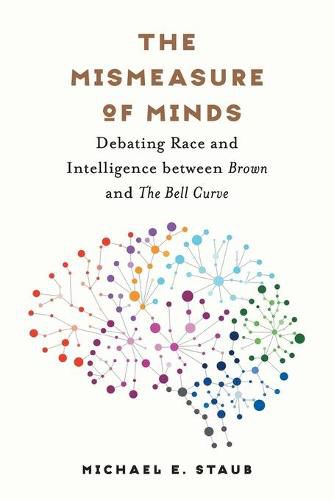Readings Newsletter
Become a Readings Member to make your shopping experience even easier.
Sign in or sign up for free!
You’re not far away from qualifying for FREE standard shipping within Australia
You’ve qualified for FREE standard shipping within Australia
The cart is loading…






The 1954 Brown v. Board of Education decision required desegregation of America’s schools, but it also set in motion an agonizing multidecade debate over race, class, and IQ. In this innovative book, Michael E. Staub investigates neuropsychological studies published between Brown and the controversial 1994 book The Bell Curve. In doing so, he illuminates how we came to view race and intelligence today.
In tracing how research and experiments around such concepts as learned helplessness, deferred gratification, hyperactivity, and emotional intelligence migrated into popular culture and government policy, Staub reveals long-standing and widespread dissatisfaction-not least among middle-class whites-with the metric of IQ. He also documents the devastating consequences-above all for disadvantaged children of color-as efforts to undo discrimination and create enriched learning environments were recurrently repudiated and defunded. By connecting psychology, race, and public policy in a single narrative, Staub charts the paradoxes that have emerged and that continue to structure investigations of racism even into the era of contemporary neuroscientific research.
$9.00 standard shipping within Australia
FREE standard shipping within Australia for orders over $100.00
Express & International shipping calculated at checkout
The 1954 Brown v. Board of Education decision required desegregation of America’s schools, but it also set in motion an agonizing multidecade debate over race, class, and IQ. In this innovative book, Michael E. Staub investigates neuropsychological studies published between Brown and the controversial 1994 book The Bell Curve. In doing so, he illuminates how we came to view race and intelligence today.
In tracing how research and experiments around such concepts as learned helplessness, deferred gratification, hyperactivity, and emotional intelligence migrated into popular culture and government policy, Staub reveals long-standing and widespread dissatisfaction-not least among middle-class whites-with the metric of IQ. He also documents the devastating consequences-above all for disadvantaged children of color-as efforts to undo discrimination and create enriched learning environments were recurrently repudiated and defunded. By connecting psychology, race, and public policy in a single narrative, Staub charts the paradoxes that have emerged and that continue to structure investigations of racism even into the era of contemporary neuroscientific research.